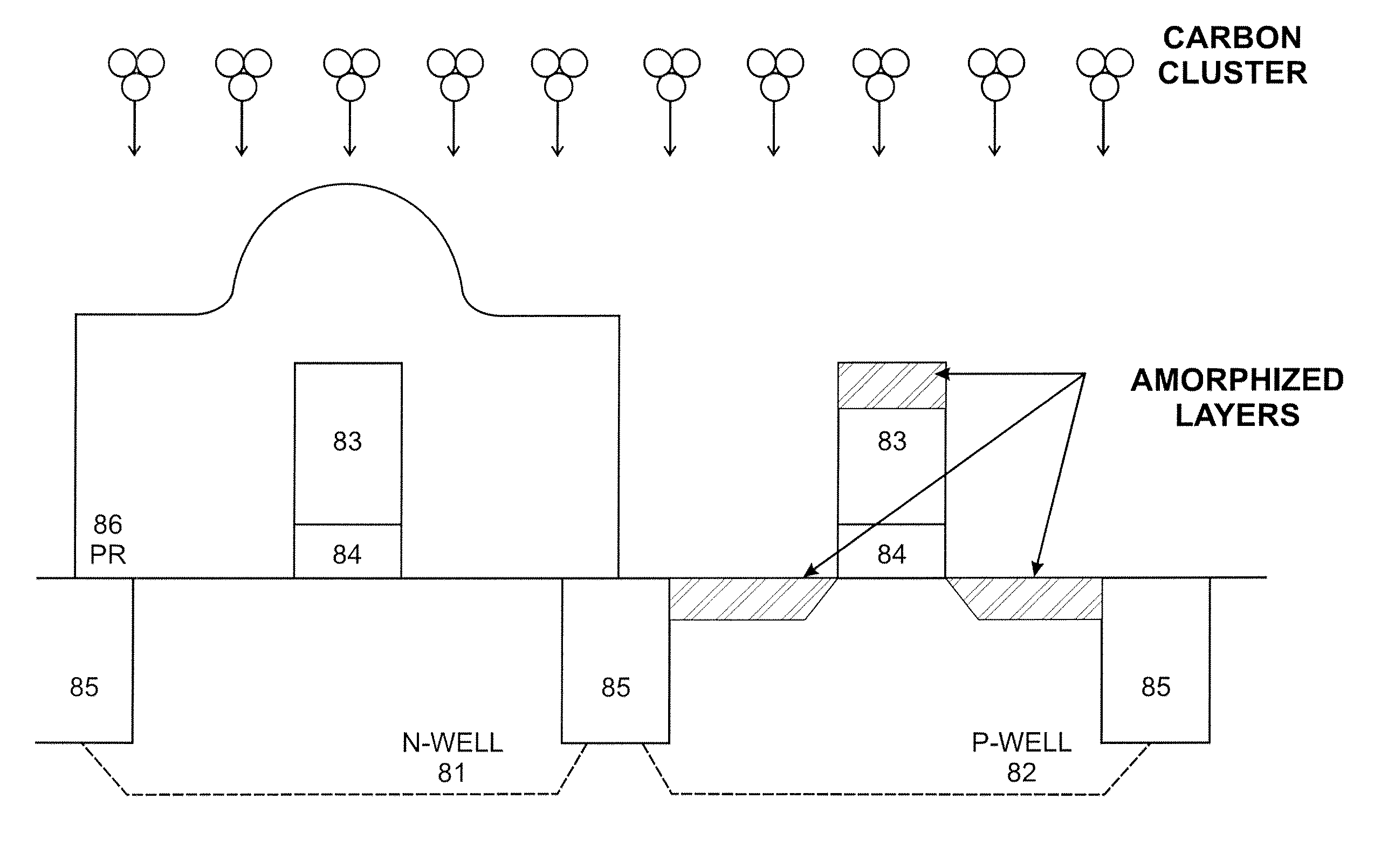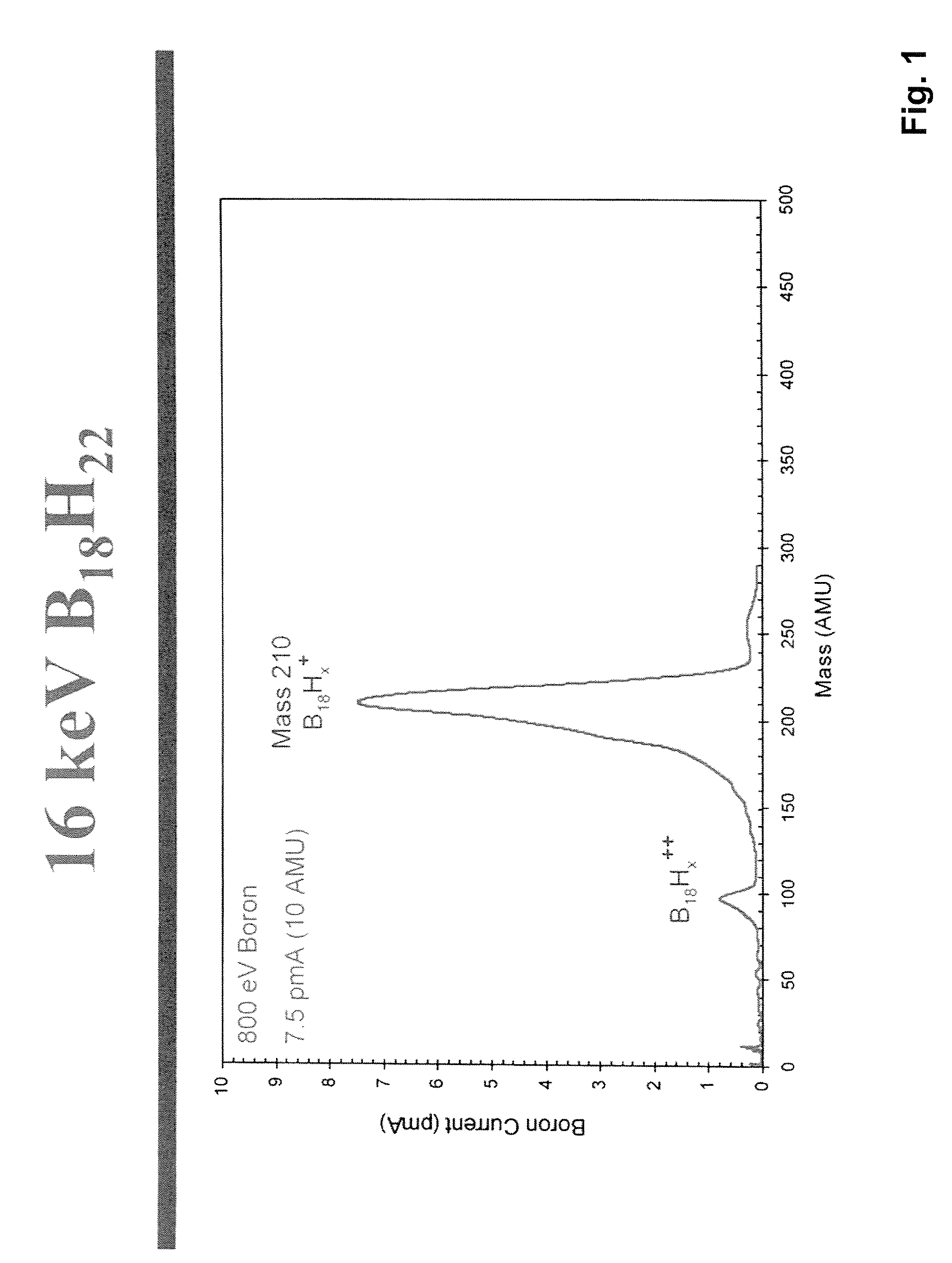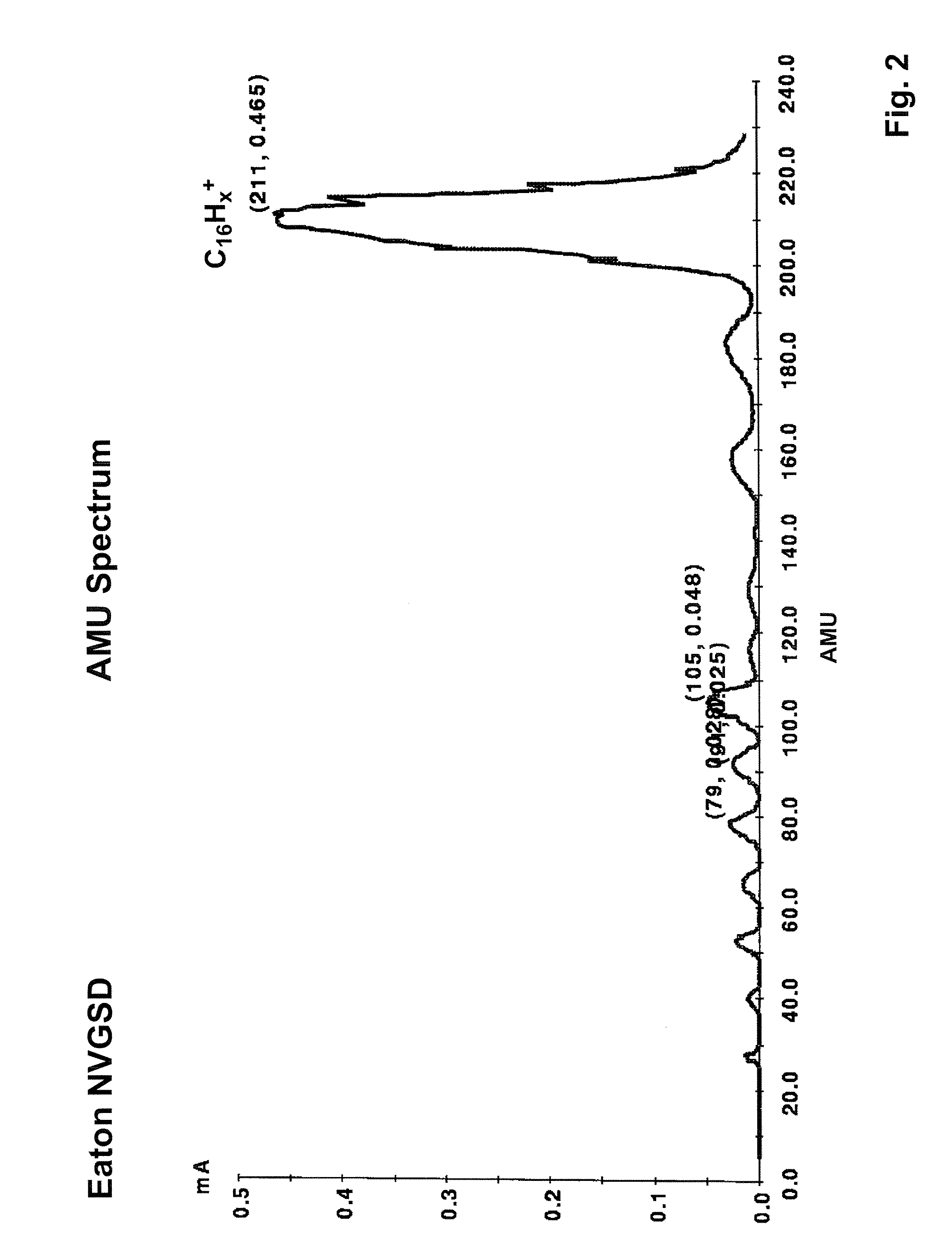System and method for the manufacture of semiconductor devices by the implantation of carbon clusters
a technology of carbon clusters and semiconductor devices, which is applied in the direction of semiconductor devices, irradiation devices, electric discharge tubes, etc., can solve the problems of increasing the leakage current of usj transistors, difficult formation of usjs, and high cost of gesup>+/sup> implants, so as to reduce the energy of boron implants, reduce the energy of carbon implants, and reduce the effect of diffusion
- Summary
- Abstract
- Description
- Claims
- Application Information
AI Technical Summary
Benefits of technology
Problems solved by technology
Method used
Image
Examples
Embodiment Construction
[0068]FIG. 1 shows a mass spectrum of B18H22 as produced by an ion implantation system. A Clusterlon® source, for example, as mentioned above, is used to generate ions which are extracted at 20 kV and transported through an analyzer magnet. A resolving aperture at the exist of the magnet provided a modest mass resolution of M / ΔM=15; the beam is scanned across the resolving aperture and the ion current is passed the resolving aperture and measured by a Faraday located about 2 meters from the source. The parent peak at 210 amu is composed of B18Hx+; there is a range of retained H atoms of perhaps 1016H10, as produced by an ion implantation system. The parent peak C16Hx+ is at 211 amu, and the Faraday current was about 500 uA at 17 kV extraction voltage. Thus, the effective implant energy per carbon atom was about 1 keV, and the effective carbon current about 8 mA. Note that the mass, effective current, and implantation energy of the C of FIG. 2 and B of FIG. 1 are about the same. The ...
PUM
 Login to View More
Login to View More Abstract
Description
Claims
Application Information
 Login to View More
Login to View More - R&D
- Intellectual Property
- Life Sciences
- Materials
- Tech Scout
- Unparalleled Data Quality
- Higher Quality Content
- 60% Fewer Hallucinations
Browse by: Latest US Patents, China's latest patents, Technical Efficacy Thesaurus, Application Domain, Technology Topic, Popular Technical Reports.
© 2025 PatSnap. All rights reserved.Legal|Privacy policy|Modern Slavery Act Transparency Statement|Sitemap|About US| Contact US: help@patsnap.com



